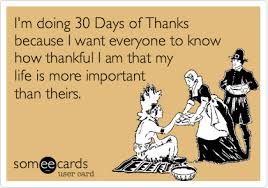My name is Whitney Godwin, and I am privileged to guest post on Samantha’s blog this week. Samantha and I are both in the Masters of Journalism program at West Virginia University, as well as an Interactive Media & Blogging class.
Reaching out to each other for communication began with oral stories and has escalated with technology . When social media burst on the scene about eight years ago, it forever changed the way that PR professionals, nonprofit organizations and businesses would communicate to the rest of the world. Social media platforms allow organizations to reach out and engage their audience in conversation, but also provides a way to strengthen media relations and meet new audience members and volunteers. The advent of social media not only allows for more interpersonal communication, but organizational communication as well.
There are over 400 local nonprofit organizations in the Morgantown area; this number includes the many churches and religious organizations. Many are small organizations that are specific to the state or Morgantown. When conducting some research on religious organizations’ social media usage and that of nonprofits in the area, Samantha and I found a large overlap and many similarities.
I conducted some original research about the social media usage among nonprofit organizations here in Morgantown including religious organizations. I sent a 10 question, online survey to 40 local nonprofits. While only 11 of the 40 nonprofits contacted actually took the survey, five responded to the e-mail stating that they do not use social media because they didn’t feel they needed to in order to reach their audience. I had a much lower response rate than Samantha did. I did include a few religious organizations in my sample, but most were primarily nonprofit organizations.
 Based on preliminary research, I expected that local social media usage would reflect the statistics of the average social media usage among nonprofits nationwide. For example, nationally, nearly 90 percent of nonprofit organizations use social media regularly. Similarly, 90 percent of local nonprofit respondents report using social media regularly.
Based on preliminary research, I expected that local social media usage would reflect the statistics of the average social media usage among nonprofits nationwide. For example, nationally, nearly 90 percent of nonprofit organizations use social media regularly. Similarly, 90 percent of local nonprofit respondents report using social media regularly.
I expected Facebook to be the most widely used social media platform, and my survey results indicated that it was. Ninety percent of respondents indicated they use Facebook. Some organizations indicated using multiple social media platforms. Sixty-three percent indicated they use Twitter, 36 percent used LinkedIn, 18 percent used Instagram,18 percent had a blog and 18 percent used Youtube, while just nine percent used Foursquare and Google+. Eighteen percent of respondents indicated that they used other social media platforms in addition to those listed. Samantha’s results also concluded that Facebook is the most widely used form of social media among nonprofit religious organizations here in Morgantown.
More research must be done before we are better able to understand nonprofit social media usage and trends. Studies need to be conducted and repeated. Few studies have been done on the topic of nonprofit social media usage, and those that have been done never replicate the ones before. So it’s hard determine whether or not the foundational research is accurate. In turn, it’s hard to build on research that may or may not be accurate. Additionally, it would be interesting to survey the local nonprofits to see how many of them use social media for fundraising specifically, and how successful they are at it. It’s apparent that much more research needs to be done before we can begin to tweak and further accelerate social media usage among nonprofits.









